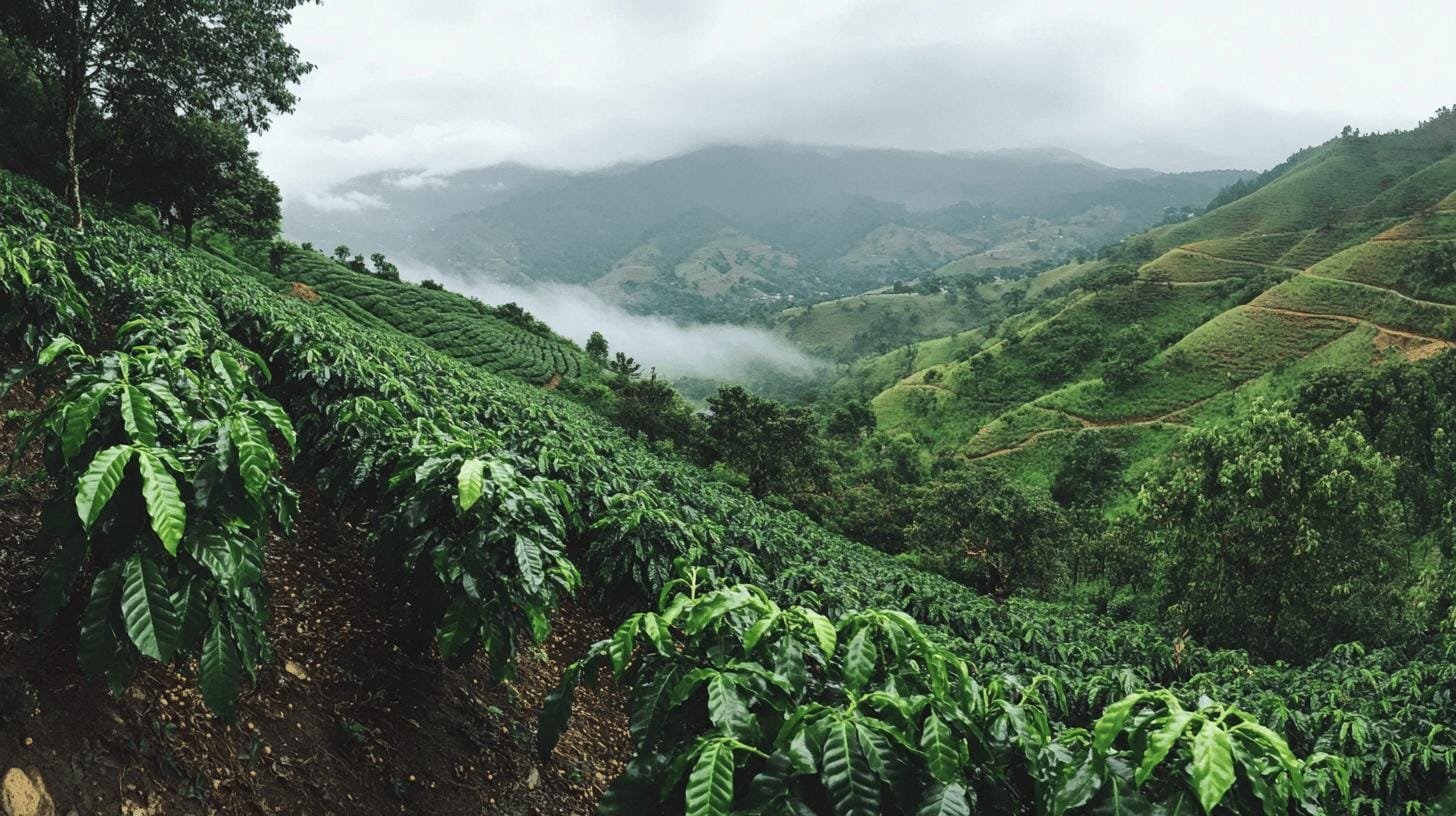
Artisanal Rituals for a Memorable Customer Experience
How can brands create a more balanced and memorable customer experience by blending artisanal product quality with thoughtful everyday rituals that keep people coming back?

In the world of gourmet coffee, is there a clear winner between Colombian coffee vs Ethiopian coffee? These two powerhouses in the coffee world present distinctive, cherished flavor profiles that captivate taste buds globally. Colombian coffee, renowned for its smooth, nutty, and chocolatey notes, offers a balanced and approachable experience.
By contrast, Ethiopian coffee dazzles with vibrant, fruity, and floral notes that highlight its complexity and rich heritage. The ensuing showdown explores these contrasting profiles, allowing coffee enthusiasts to appreciate the nuanced world of flavors each region brings to the cup.
Colombian coffee is known for its smooth and balanced flavor. It features mild undertones like nutty and chocolatey hints. The coffee’s medium body makes it a popular choice for those who enjoy an easy, comforting drink. These flavors are the result of excellent growing conditions and careful processing in Colombia’s diverse regions.
On the other hand, Ethiopian coffee is famous for its complex and varied flavors. It showcases fruity and floral notes, along with bright acidity. Sometimes, these coffees possess wine-like qualities. Ethiopian coffee’s complexity is due to its unique microclimates and traditional processing methods, which highlight its fruity and floral aromas.
Comparing Colombian coffee vs Ethiopian coffee shows a range of taste preferences. Colombian coffee provides a steady experience, perfect for those favoring subtle flavors and a smooth finish. In contrast, Ethiopian coffee offers an adventurous taste journey with vibrant and diverse flavors. Ultimately, the choice between these two comes down to personal preference, with each region offering something special.

Colombian coffee grows well in areas like Huila, Antioquia, and Nariño. These regions have conditions that greatly affect the coffee’s taste. Beans are grown at elevations between 1,200 and 1,800 meters, where the climate promotes a smooth and balanced flavor. High altitudes and moderate temperatures help develop nutty and chocolatey undertones. Volcanic soil and thoughtful harvesting practices enhance this rich, mild taste profile, making Colombian coffee a favorite for smooth coffee lovers.
In contrast, Ethiopian coffee grows in areas like Sidamo, Yirgacheffe, and Harar, with altitudes from 1,500 to 2,200 meters. This higher terrain and Ethiopia’s varied microclimates create its unique flavors, which are fruity and floral. Diverse rainfall and temperatures enhance the coffee’s bright acidity and complexity. Each region contributes distinct traits, making Ethiopia’s coffee a vibrant and diverse taste tapestry.
Colombian coffee uses wet processing. The process removes the cherry’s outer pulp before fermentation. This helps achieve a clean and consistent taste. Washing the beans carefully minimizes unwanted flavors, letting the coffee’s sweetness and subtle nutty, chocolate undertones shine. This method, combined with Colombia’s ideal conditions, produces beans with a smooth, harmonious taste.
In contrast, Ethiopian coffee often undergoes dry processing. Coffee cherries dry in the sun with the fruit still attached. This enhances fruity and floral notes, creating a vibrant, complex flavor. Natural sugars from the cherry infuse into the bean, giving the coffee wine-like qualities and bright acidity. Ethiopian dry methods amplify flavor complexity, making every cup a flavorful journey.
Roasting levels further influence these profiles, preserving unique attributes granted by processing and terroir. Each cup of coffee provides a distinct experience, showcasing the art of coffee production from bean to cup.

For Colombian coffee, drip coffee and espresso are recommended. Drip coffee highlights subtle nutty and chocolatey undertones, offering a balanced cup. Espresso intensifies these flavors for a richer experience. These methods make the most of the coffee’s medium body and balanced profile, ensuring satisfaction for those who enjoy mellow flavors.
Ethiopian coffee shines with pour-over and French press methods. Pour-over highlights fruity and floral notes, letting bright acidity and complex flavors come through. French press amplifies these characteristics for a full-bodied, aromatic cup. These methods elevate Ethiopian coffee’s diverse flavors, making them ideal for those seeking nuanced taste adventures.
Ethiopian coffee is deeply rooted in the country’s culture. The Ethiopian coffee ceremony is central to social gatherings and reflects hospitality. Roasting, brewing, and savoring coffee signifies respect, friendship, and tradition. This ritual emphasizes coffee’s social significance, reinforcing community bonds.
Colombian coffee also holds national pride and cultural significance. Festivals celebrate coffee’s importance to Colombia’s identity, showcasing coffee-growing regions and honoring farmers. Coffee is also part of daily life, from morning routines to social gatherings, symbolizing hard work and dedication.
Economically, Ethiopian coffee is one of the country’s top exports. Its international acclaim boosts growth and preserves traditional cultivation practices. In Colombia, coffee significantly impacts the economy, driving jobs and sustaining communities. It’s the reason for Colombia’s standing as a leading high-quality coffee producer.

Home-roasting coffee offers freshness and flavor control, allowing exploration of different beans. Freshly roasted coffee results in vibrant flavors and aromas. It also allows customization of roast levels to personal taste, which isn’t possible with commercial options. Home-roasting is cost-effective and environmentally friendly, as it reduces packaging waste.
This artisanal approach turns coffee-making into a creative endeavor. It allows discovering new flavors that reflect personal preferences. Home-roasting also enhances appreciation for the coffee bean’s journey and the craft involved in producing quality coffee.
In examining the flavor profiles of Colombian coffee vs Ethiopian coffee, each offers distinct taste experiences. Colombian coffee is notable for its smooth and well-balanced flavor, with chocolatey and nutty undertones. Ethiopian coffee, in contrast, delivers vibrant complexity through its fruity and floral notes.
The coffee’s origins and growing conditions further influence these profiles, with unique processing methods adding layers of variety.
A journey through these coffees offers an enriching exploration of global coffee culture, leaving coffee enthusiasts with memorable encounters in taste.
Colombian and Ethiopian coffee each offer unique flavor profiles. Colombian coffee is smooth and well-balanced with chocolatey and nutty undertones, while Ethiopian coffee is vibrant with fruity and floral notes.
A: Colombian coffee is renowned for its quality due to favorable growing conditions and consistent production techniques, making it highly regarded, though preference varies based on individual taste for coffee flavor profiles.
A: Kenyan and Yemeni coffees often share similarities with Ethiopian coffee, featuring complex profiles with bright acidity and fruit-forward flavors that cater to those seeking a vibrant taste experience.
A: Colombian coffee has chocolatey, nutty, and mild undertones, offering smoothness. Ethiopian coffee features bright acidity with fruity, floral, or wine-like notes, creating a vibrant and diverse taste experience.

How can brands create a more balanced and memorable customer experience by blending artisanal product quality with thoughtful everyday rituals that keep people coming back?

Independent coffee shops have always been about more than caffeine—they’re hubs of creativity, connection, and care. As café culture continues to evolve, new trends are

Introduction Independent cafes win when they feel like the neighborhood’s living room and operate with the discipline of a great kitchen. Below is a quick

Discover how top specialty coffee brands create lasting loyalty through storytelling, sourcing, and community connection. Real tips from 6 industry experts.

Discover the ultimate showdown between two beloved coffee brewing methods: the French press and Chemex. Explore how each technique caters to distinct palates, with the French press delivering bold flavors and the Chemex presenting a bright, clean taste.

Unlock the secrets to brewing the perfect cup of coffee with our comprehensive guide on using a coffee scale. Discover how precise measurements enhance flavor and consistency while eliminating bitterness.

Discover how water temperature plays a vital role in brewing the perfect cup of coffee. This article delves into the ideal temperature range of 195°F to 205°F for optimal flavor extraction, enhancing the enjoyment of high-quality beans.

Discover the world of curated specialty coffee bundles, perfect for enthusiasts seeking quality and craftsmanship. This article explores the benefits of ethically sourced, small-batch beans from brands like Equipoise Coffee, offering diverse flavor profiles that elevate your brewing experience.

Discover the art of manual brewing to elevate your coffee experience! This article explores various techniques like pour-over, French press, and AeroPress, revealing how they enhance flavor and your connection to every cup.